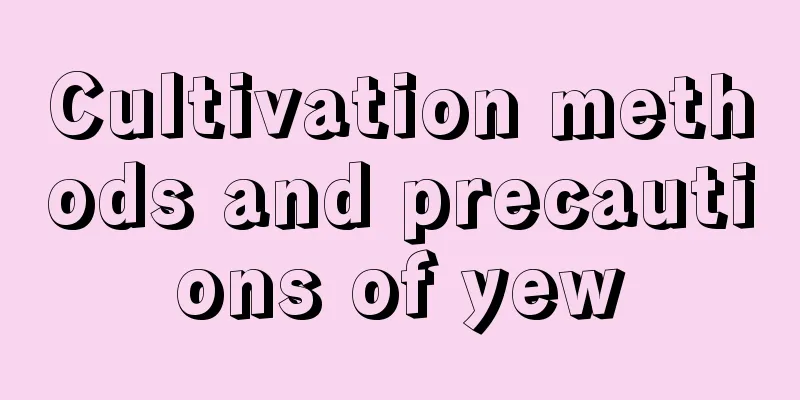What are the cultivation methods and precautions of Begonia truncatum

Introduction to Iron BegoniaThe iron begonia, also known as the qilin thorn and tiger thorn, is a plant of the Euphorbiaceae family and the Euphorbia genus. It has many branched stems with longitudinal ridges on them. The leaves are alternate and grow on young branches. They are obovate or oblong-spoon-shaped. The seeds are ovoid and gray-brown. It is propagated by cuttings and is very easy to root. Cultivation method of Begonia truncatumBegonia iron tree likes warm, sunny environment, is not drought-resistant, avoids moisture, and is afraid of cold. It can safely overwinter if the room temperature is above 3℃ in winter. If the temperature is above 15 degrees and there is sufficient light, it can continue to bloom. It is suitable for planting in loose, well-drained sandy soil. It requires sufficient sunlight during the flowering period, and a thin fertilizer should be applied once every half a month. Begonia needs sufficient light during its growth period and is suitable for maintenance in sunny places. With enough fertilizer and temperature, it can continue to bloom in winter. The soil can be prepared by mixing humus and sand. The potting soil should be repotted every 2-3 years. The potting soil should be dry and avoid moisture. Too much watering will cause root rot. Watering methodThe iron begonia is relatively drought-resistant but not tolerant to waterlogged environments. It does not need to be watered too much at normal times. If the soil in the pot is too moist, it will cause root rot. It does not need to be watered too much during the flowering period, otherwise it will cause the flowers to fall off. Fertilization methodThe requirements of the iron hibiscus for fertilizer are not high. Do not apply concentrated fertilizer or raw fertilizer, and do not apply too much nitrogen fertilizer, otherwise the branches and leaves will grow too long and affect flowering. It is enough to apply fertilizer 2-3 times in spring and once every 20-30 days in autumn. Pruning methodsIn fact, in many cases, flower lovers have to prune the iron begonia because the plant is large and they have no choice but to do it. The iron begonia has the habit of blooming on the top branches. Timely pruning can increase the branches and achieve the purpose of more flowering. In June and July after flowering, the diseased branches, overgrown branches, and weak branches should be cut off. Matters Needing Attention in Cultivating BegoniaBegonia is a sun-loving plant, but it cannot tolerate strong light. Too strong light in summer will burn the plant. It is best to keep it in a well-ventilated semi-shaded place. In addition, when fertilizing, control the application of nitrogen fertilizer and pay attention to nutritional balance, which is beneficial to growth and flowering. |
<<: How to prune camphor trees
Recommend
Can tulips be planted in the yard?
Can I grow tulips in my yard? Tulips can be plant...
How to water Cymbidium orchids
Water quality requirements The water used for Cym...
How to prune climbing roses
Climbing rose pruning time Climbing roses should ...
Can Yalezhiwu be hydroponically cultivated? Hydroponics cultivation methods and precautions
Can the Dance of the Arts be hydroponically culti...
Why are the lily leaves turning yellow?
1. Hard soil Reason: After growing lilies for a p...
How to plant persimmon trees
How to plant a persimmon tree: In fact, the metho...
What is the correct way to water? These little tips will help your flowers grow better!
Drying reason: There is chlorine in tap water, wh...
Cultivation methods and precautions of Jade Lilac
1. Maintenance methods 1. Soil: Jade lilac likes ...
Things to note when pruning spider plants, and when is the right season to prune them?
1. Pruning precautions 1. Weather: Pruning should...
How to water Phalaenopsis during flowering period
1. How to water It is usually in a semi-dormant o...
When is the best time to sow tomatoes in the south?
Suitable time for planting tomatoes in the south ...
The effects and functions of cucumbers, what are the benefits of eating cucumbers
1. Lose weight and strengthen the body Cucumbers ...
The Feng Shui Effect of Violet in the Home
The role of placing it in the living room The liv...
How to pinch the tips of carnations
Pinching carnations according to their growth sta...
Disease and insect pest control of Lipia orchid
Sheath Rust Leaves infected with this disease usu...









